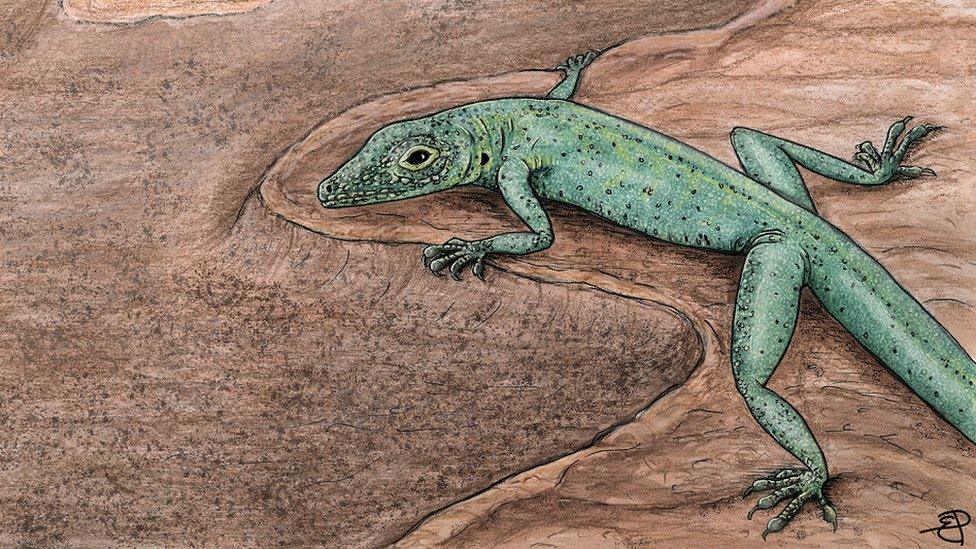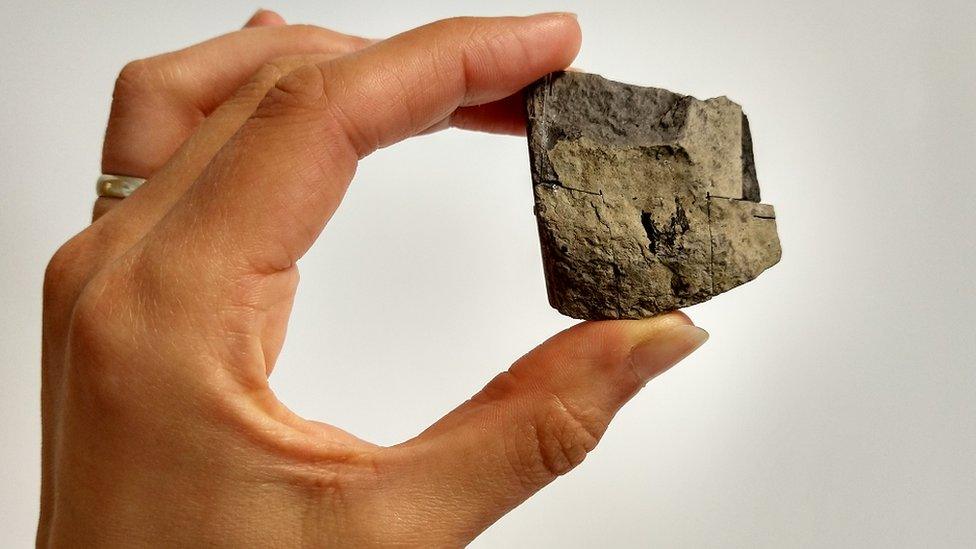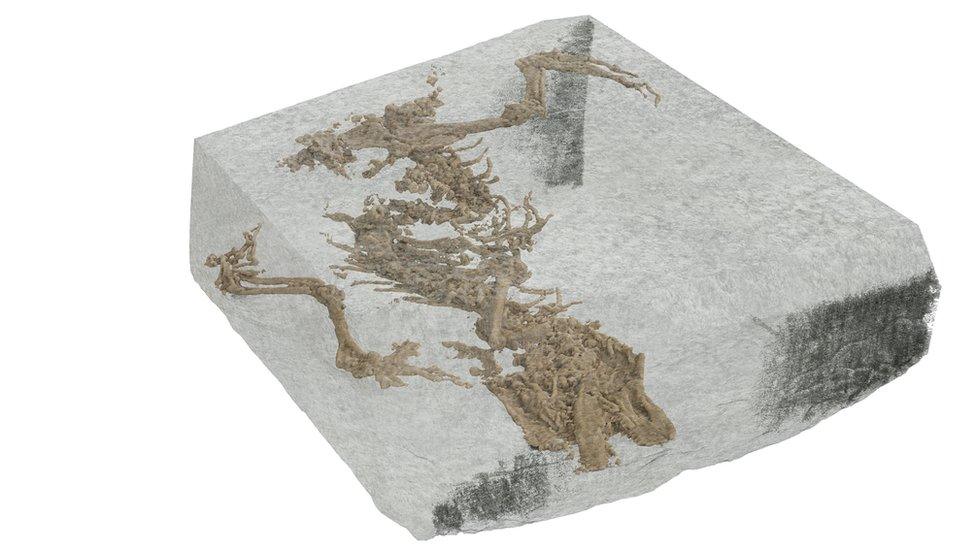Skye fossil offers clues to early evolution of lizards
- Published

An artist's impression of Bellairsia gracilis
A tiny fossil found on Skye has provided new information on the early evolution of lizards during the time of dinosaurs, say scientists.
The skeleton of Bellairsia gracilis is just 6cm (2in) long and dates from the Middle Jurassic period 166 million years ago.
It is the most complete fossil lizard of this age anywhere in the world.
Researchers said it provided evidence of what the ancestor of today's lizards might have looked like.
The fossil was found in 2016 by a team led by Oxford University and National Museums Scotland.
It is one of several new fossil discoveries from Skye, dubbed Scotland's Jurassic Isle due to the large number of fossil finds made on the island.
Other recent discoveries have included early amphibians and mammals.

The fossil was found in rock on Skye

A digital image of the fossil
Analysis of Bellairsia was a joint project between researchers at the universities of Warsaw, Oxford and London's UCL. The findings have been reported in the journal Nature, external.
Dr Mateusz Tałanda, of University of Warsaw and UCL, said: "This little fossil lets us see evolution in action.
"In palaeontology you rarely have the opportunity to work with such complete, well-preserved fossils coming from a time about which we know so little."
Dr Elsa Panciroli, of Oxford University Museum of Natural History and National Museums Scotland, discovered the fossil.
She said: "The little black skull was poking out from the pale limestone, but it was so small I was lucky to spot it.
"Looking closer I saw the tiny teeth, and realised I'd found something important, but we had no idea until later that almost the whole skeleton was in there."

Skye is renowned for its fossils
Lizards are part of a wider animal group known as squamates, which comprises more than 10,000 species and includes snakes, chameleons and geckos.
Although scientists know the earliest origins of squamates lie 240 million years ago in the Triassic period, a lack of fossils from the Triassic and Jurassic has made their early evolution and anatomy difficult to trace.
Analysing the new fossil alongside living and extinct fossil squamates confirmed Bellairsia belonged to the "stem" of the squamate family tree.
This means that it split from other lizards just before the origin of modern groups.
- Published22 February 2022

- Published11 March 2020

- Published25 July 2019
